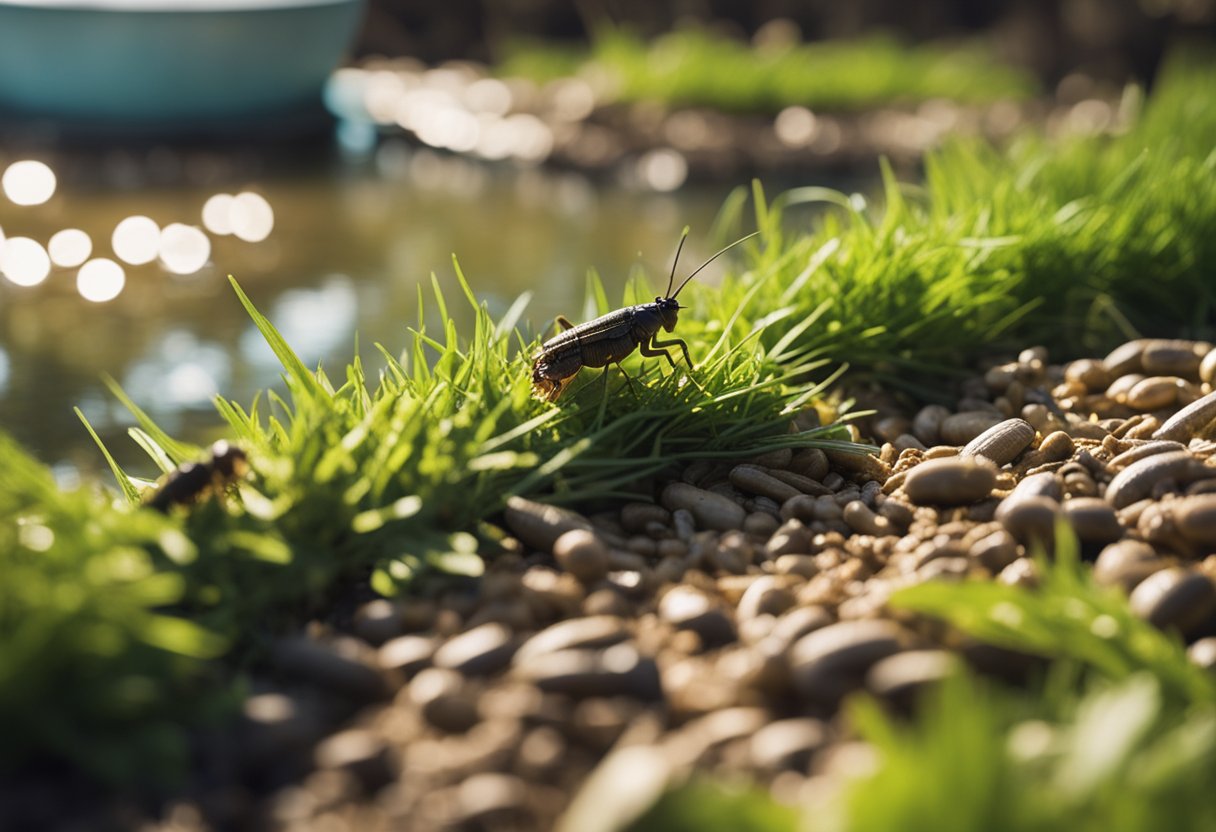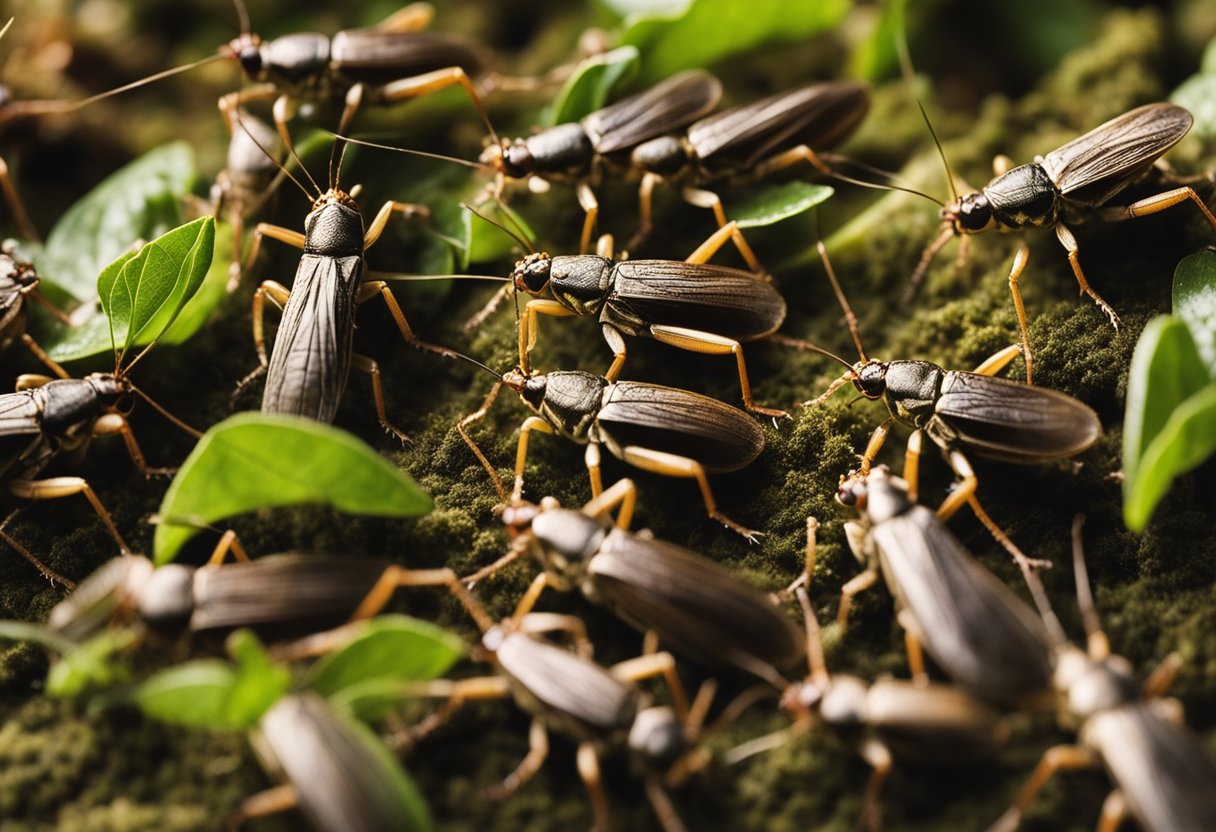Crickets are a common sight in various environments, ranging from meadows to basements. Known for their distinct chirping sounds, these insects are part of the Orthoptera order, which also includes grasshoppers and katydids. While often regarded simply as background noise on a summer evening, the presence of crickets can have implications for human health and wellbeing. As a source of protein, crickets have been consumed in many cultures and are increasingly considered a sustainable food option due to their low environmental impact compared to traditional livestock.

The health risks associated with crickets, however, merit attention. Crickets are not typically dangerous to humans, but they can be a nuisance in homes where their incessant chirping disrupts sleep. Moreover, they can act as carriers for various pathogens, which may lead to allergic reactions or the spread of disease. It’s crucial for individuals to be aware of these potential risks in order to take appropriate measures to manage cricket populations in and around their living spaces.
On the beneficial side, crickets contain nutrients such as protein, vitamins, and minerals. The practice of entomophagy, or the consumption of insects, highlights crickets as a food source that is not only nutritious but also beneficial for the planet due to their efficient feed-to-protein conversion rates. The protein content in crickets is comparable to that of traditional meats, making them a potential alternative for those looking to diversify their protein sources with an eye towards environmental sustainability. Understanding both the advantages and potential health concerns related to crickets is important for informed decision-making regarding their role in our environment and diet.
Understanding Crickets
The study of crickets encompasses their diverse species, distinct physical traits, and behaviors. They are a fundamental aspect of many ecosystems and have a significant role in the food chain.
Species Diversity and Identification
Crickets belong to the insect order Orthoptera, which also includes grasshoppers and katydids. Over 900 species of crickets exist, with variations in habitat and behavior. Prominent types include:
- House Crickets (Acheta domesticus): Common in homes, they thrive in warm environments.
- Field Crickets (Gryllus spp.): Found in outdoor areas like fields and gardens.
- Camel Crickets (Rhaphidophoridae): Recognized by their humpbacked appearance.
- Cave Crickets (Rhaphidophoridae): Prefer dark and moist environments, such as caves.
These species can be identified by various characteristics, such as color, which ranges from brown to black, and sometimes with patterns or stripes.
Physical Characteristics and Behaviors
Crickets typically have elongated bodies, with six legs that include large hind legs for jumping. They possess two pairs of wings; however, some species like camel crickets do not use their wings for flight.
Chirping is a distinctive behavior mainly observed in male crickets, produced by rubbing their wings together. This sound serves multiple purposes: to attract females for mating and to ward off other males. Each species has its own chirp pattern.
The mating process involves the male cricket serenading the female with a song unique to its species. After mating, females lay eggs in the soil or another suitable substrate, leading to the continuation of the cricket life cycle.
Crickets as Pests and Home Infestation
Crickets can become persistent pests when they invade homes, potentially causing damage and disturbance. Understanding their behavior, potential entry points, and control strategies is essential for maintaining a cricket-free home.
Common Entry Points and Habitats
Crickets commonly enter homes through small openings around doors, windows, and any other exterior cracks. They are looking for warmth, shelter, and sustenance, which houses abundantly provide. Basements, attics, and crawl spaces offer ideal habitats for crickets due to their typical warmth and humidity. Piles of debris or stacked boxes can further entice crickets by providing hiding spots.
Typical Entry Points:
- Gaps under doors
- Unselaed windows and screens
- Foundation cracks
- Utility entry points
Preferred Habitats:
- Warm basements
- Cluttered attics
- Moist crawl spaces
- Areas with fabric or debris
Signs of Infestation
An infestation may be present if there is frequent chirping, particularly at night, or sightings of crickets indoors. Visible damage to fabrics, such as bite marks on clothing or furniture upholstery, can also indicate a cricket presence. One might notice dead crickets or their droppings, which resemble tiny black pellets, in corners or hidden areas.
- Evidence of Infestation:
- Persistent chirping sounds
- Cricket sightings
- Fabric damage
- Droppings and carcasses
Prevention and Control Strategies
To prevent crickets from infesting, homeowners should seal entry points with caulk and ensure doors and windows fit tightly. Reducing moisture through dehumidifiers and fixing leaks can make homes less attractive to crickets. Removing debris and vacuuming regularly can limit cricket hiding spaces. Pest control measures such as sticky traps can capture crickets already inside the house. If the infestation persists, professional pest control services may be necessary for effective resolution.
Prevention Tips:
- Seal cracks and openings with caulk
- Maintain tight-fitting doors and windows
- Reduce moisture and clutter
Control Measures:
- Use sticky traps in infested areas
- Regularly vacuum to remove crickets and eggs
- Consult professional pest control as needed
Health Risks Associated with Crickets
Crickets, a common insect encountered in various environments, can present certain health risks to humans including disease transmission and allergic reactions. Understanding these risks is crucial for taking appropriate preventive measures.
Potential for Disease Transmission
Crickets are capable of carrying and transmitting pathogens that could lead to human diseases. They are known to harbor bacteria such as salmonella and E. coli, which can result in illnesses if humans come into contact with cricket feces or if crickets contaminate food sources. In addition to bacteria, certain species of crickets could potentially act as vectors for parasites that are responsible for other diseases.
- Key Pathogens:
- Salmonella spp.
- Escherichia coli (E. coli)
Additionally, they’ve been associated with carrying diseases like cholera and dysentery, though the risk of cricket-to-human transmission is generally considered to be low.
Allergic Reactions and Bites
Individuals may experience allergic reactions to crickets. The presence of crickets can lead to issues ranging from mild irritation to more severe symptoms like rash or respiratory problems, particularly in individuals with pre-existing allergies.
- Allergy Symptoms May Include:
- Skin irritation or rash
- Respiratory discomfort
Crickets have mouthparts that allow them to bite, although this is a relatively rare occurrence and typically not a serious health risk. However, cricket bites can cause pain and skin irritation to sensitive individuals.
Nutritional Value of Crickets
Exploring the nutritional offerings of crickets reveals their potential as both an alternative and supplemental food source rich in protein, vitamins, and minerals.
Crickets as a Food Source
Crickets are consumed in various cultures for their nutritional content; they are recognized as edible insects that provide a good supply of protein, essential amino acids, vitamins, such as B12 and B2, minerals including iron and calcium, and fibers. The fat content in crickets is primarily unsaturated fats, which are considered beneficial for heart health. When it comes to cooking, crickets can be roasted or fried, and cricket flour is used as an ingredient in baking, providing a sustainable protein source.
Nutritional Breakdown:
- Protein: High-quality with all essential amino acids
- Vitamins: Rich in B12, B2
- Minerals: Good source of iron and calcium
- Fat: Predominantly unsaturated fats
- Fiber: Provides dietary fiber
Comparison with Traditional Protein Sources
Crickets boast a higher protein quality compared to some common animal-based protein sources. For instance, cricket protein typically contains more amino acids than beef. The iron content in crickets is particularly notable, often surpassing that of spinach by weight. When comparing cricket protein to traditional sources like beef, chicken, or pork, one finds crickets offer a comparable or higher nutrient density, often with lower environmental impact.
Comparative Highlights:
- Cricket vs. Beef: More iron and equal or higher amounts of protein
- Cricket vs. Chicken: Greater protein content and essential amino acids
- Cricket vs. Pork: Higher mineral content, especially iron, and less environmental footprint
While crickets provide valuable nutrition, it is crucial to consider the source and preparation, as with any food, to mitigate health risks.
Environmental and Ethical Implications

In the quest for sustainable protein sources, cricket farming emerges as a significant contender. This section examines the environmental benefits of cricket cultivation and the ethical factors associated with insect rearing practices.
Crickets and Sustainable Agriculture
Crickets require considerably fewer resources compared to traditional livestock. They have a high feed conversion rate, meaning they convert feed into body mass more efficiently, which reduces the environmental footprint. Here are some specifics:
- Land use: Crickets demand less agricultural land due to their vertical farming capability.
- Water conservation: These insects necessitate minimal water, notably decreasing water usage.
- Greenhouse gases: Crickets produce lower amounts of greenhouse gases like methane and ammonia, mitigating their contribution to climate change.
- Resource efficiency: They can thrive on organic waste streams, enhancing the sustainability of the agricultural system.
Ethical Considerations of Insect Farming
The ethics of cricket farming—one of the less discussed aspects—merit consideration. Key concerns include:
- Humane treatment: Cricket farming typically involves freezing crickets into a state of hibernation before harvesting. This is considered more humane compared to some traditional animal slaughter methods.
- Preparation for consumption: The preparation must adhere to food safety and ethical standards. A clear procedure ensures that ethical concerns are addressed adequately.
- Consumer perceptions: Educating consumers about the ethical advantages of insect protein can encourage acceptance and promote a more sustainable diet.
By utilizing lower-resource farming practices and considering the welfare of these farmed insects, cricket farming may offer a viable alternative to conventional protein sources with a reduced environmental impact and heightened ethical standards.

